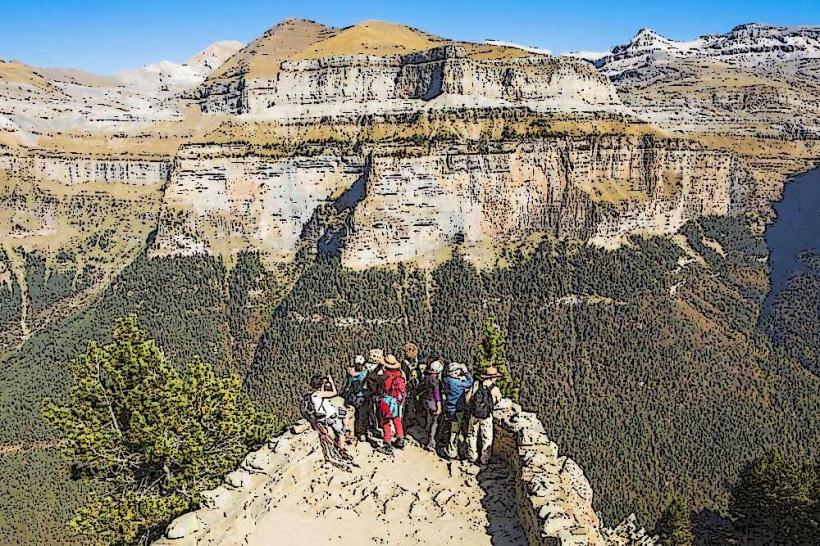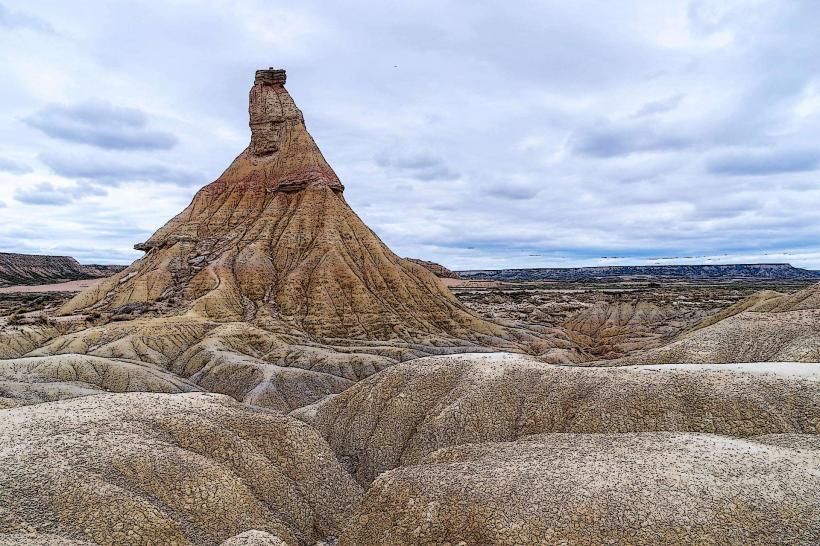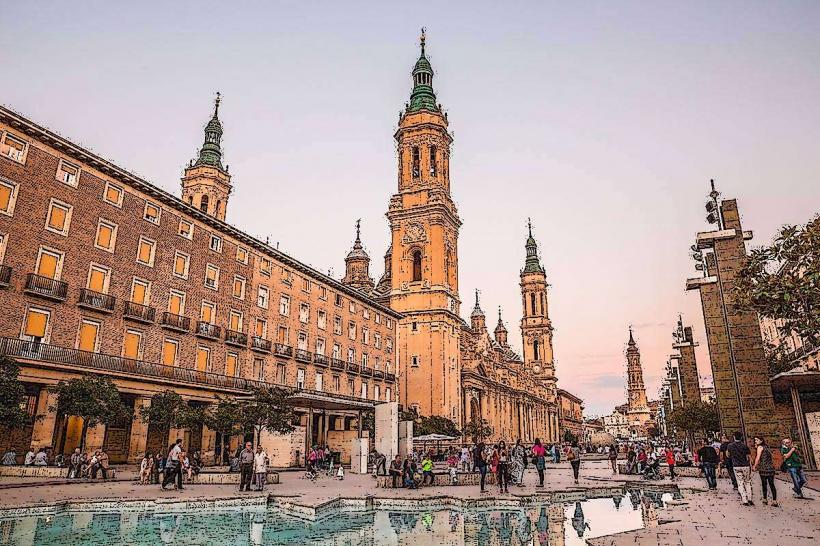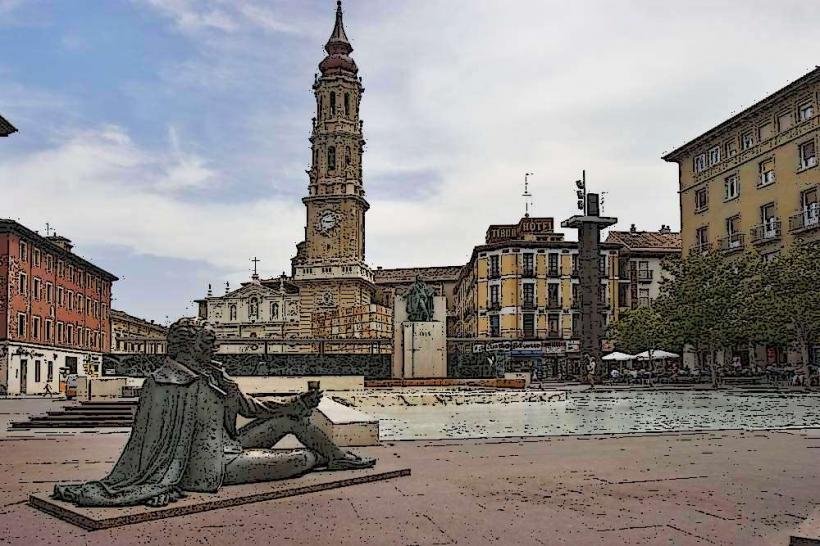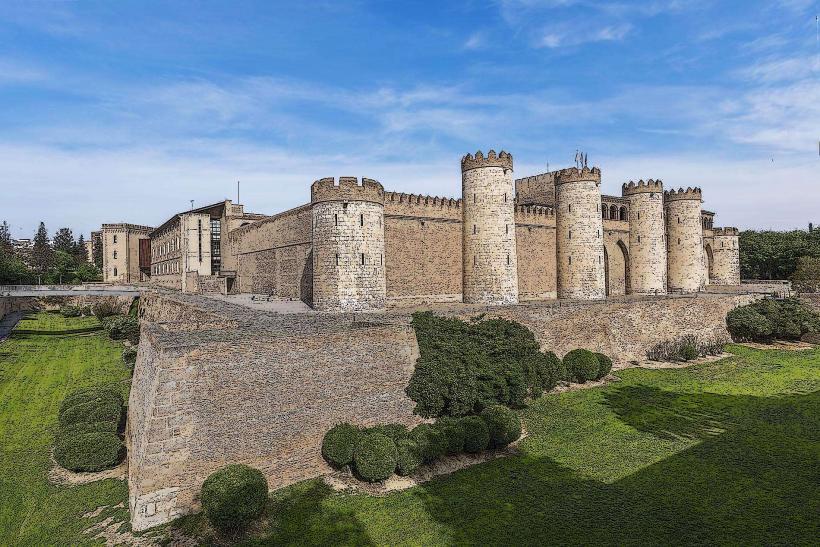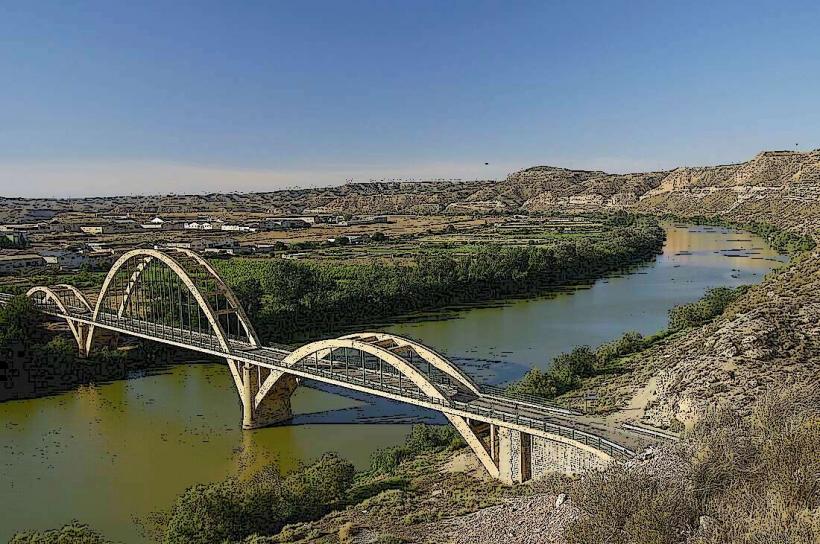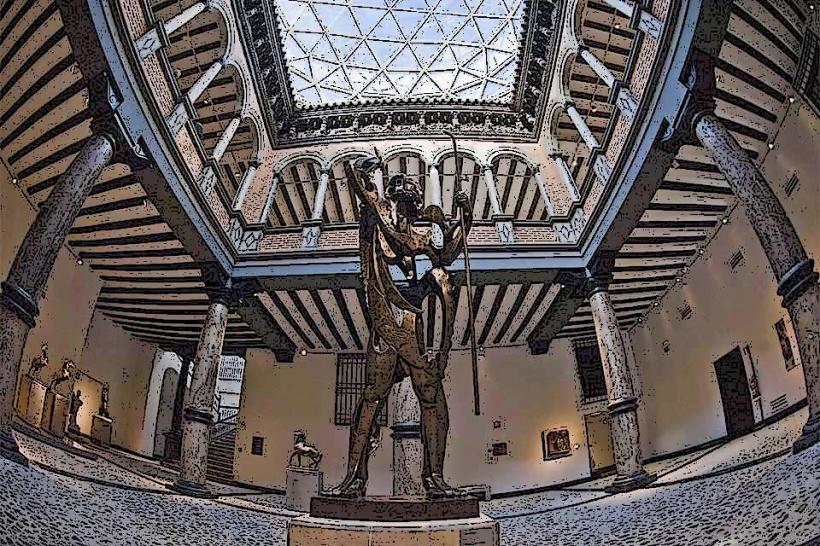Information
Landmark: Roman Theatre and ForumCity: Zaragoza
Country: Spain
Continent: Europe
The Roman Theatre and Forum in Zaragoza, Spain, are two of the most significant archaeological sites in the city, showcasing its rich Roman history. Zaragoza, known as Caesaraugusta during Roman times, was an important city in the Roman Empire, and these ancient ruins offer a fascinating glimpse into its past.
Roman Theatre of Zaragoza
The Roman Theatre in Zaragoza is one of the most impressive and best-preserved Roman theatres in Spain. It was originally built in the late 1st century BCE during the reign of Emperor Augustus and could hold up to 6,000 spectators. The theatre was primarily used for dramatic performances, including tragedies and comedies, a common form of entertainment in Roman society.
Key Features of the Roman Theatre
Theatre Structure: The Roman theatre was built into the natural slope of the land, taking advantage of the landscape to form a semicircular seating area (the cavea) that surrounded the stage (scaenae frons). The seating was divided into sections according to social status, with the VIPs sitting closer to the stage.
Stage and Scenery: The stage, known as the orchestra, would have been elaborately decorated, though much of the original decoration is no longer visible. The backdrop of the stage, the scaena, would have been a building with columns and elaborate sculptures. The orchestra and the audience would be separated by a low stone wall.
Seating: The theatre had a large, circular seating area, which was made of stone and is still visible today. The arrangement of seats reflects Roman social hierarchy, with the wealthier citizens seated closer to the action, while lower-status individuals were placed further back.
Preservation and Restoration: While parts of the theatre have been excavated and restored, much of it is still buried beneath the modern city. However, the exposed sections of the theatre are remarkably well-preserved, and visitors can see the tiered seating, the stage area, and various parts of the architectural structure.
Cultural Significance: The theatre was a key cultural center in Roman Zaragoza, hosting not only theatrical performances but also political events and other public spectacles. It reflects the Roman tradition of entertainment and serves as a reminder of the cultural and social activities of Caesaraugusta during its peak.
Roman Forum of Zaragoza
The Roman Forum in Zaragoza was the heart of the city's civic, political, and religious life during Roman times. It was the focal point for public meetings, religious ceremonies, and official announcements. The Forum is located near the Roman Theatre and consists of various structures that were central to the administration and public life of the city.
Key Features of the Roman Forum
Temple of Caesar Augustus: One of the most significant parts of the Roman Forum is the Temple of Caesar Augustus, which was dedicated to the Roman emperor. This temple, like many Roman temples, was built in a grand style and was used for religious purposes, celebrating the emperor's divine status. The columns and parts of the temple are still visible today.
Civic and Commercial Buildings: The Roman Forum also contained several civic buildings, such as basilicas (public meeting halls) and curias (places where the local senate met). These buildings would have been used for the administration of the city, legal proceedings, and the conduct of business. The forum was also surrounded by shops, markets, and other commercial establishments that catered to the public.
Public Square: The Forum itself would have been a large open space surrounded by various important buildings. It would have been a place for citizens to gather for public speeches, religious festivals, and announcements by the Roman authorities. It was both a social and political center for the people of Caesaraugusta.
Archaeological Findings: Excavations of the Roman Forum have revealed paved streets, architectural fragments, and other remnants of the ancient buildings. Visitors can view the remains of the public square, where statues and inscriptions likely stood, offering a snapshot of public life during Roman times.
Preservation and Accessibility: Like the Roman Theatre, the Roman Forum is still an active archaeological site. Many of the buildings have been excavated, and some sections have been restored, allowing visitors to walk through and explore the remains. The Forum is often integrated into modern-day Zaragoza, with parts of it located beneath contemporary streets and buildings.
Roman Influence in Zaragoza
The Roman Theatre and Forum are just two examples of the Roman heritage that shaped Zaragoza (formerly Caesaraugusta) during the Roman Empire. The city was an important administrative and cultural hub, and these sites highlight its role as a key city in the Empire's vast network of territories.
- Roman Roads: Zaragoza was well-connected by Roman roads, linking it to other major cities across the empire.
- Roman Aqueducts and Baths: In addition to the theatre and forum, Roman baths, aqueducts, and other infrastructure projects were vital to the functioning of Caesaraugusta, further showcasing the city's Roman legacy.
Visiting the Roman Theatre and Forum
- Location: The Roman Theatre and Forum are located in the historic center of Zaragoza, within walking distance of other major landmarks like the Basilica del Pilar.
- Admission: There is an entrance fee for visiting the Roman Theatre, which includes access to the archaeological site. Many visitors combine a visit to the Theatre with the Forum.
- Opening Hours: The Roman Theatre and Forum are typically open daily, but it is advisable to check the official opening hours, as they may vary due to events or maintenance.
- Guided Tours: Visitors can take guided tours to learn more about the history, archaeology, and cultural significance of the Roman Theatre and Forum, offering a deeper understanding of life in Roman Zaragoza.
Conclusion
The Roman Theatre and Forum in Zaragoza are vital pieces of the city’s Roman history and offer valuable insight into the life of ancient Caesaraugusta. These archaeological sites allow visitors to step back in time and experience the grandeur of Roman architecture, culture, and social life. Whether you're an archaeology enthusiast, a history buff, or simply interested in exploring the rich heritage of Zaragoza, these landmarks are an essential part of the city's cultural landscape.

